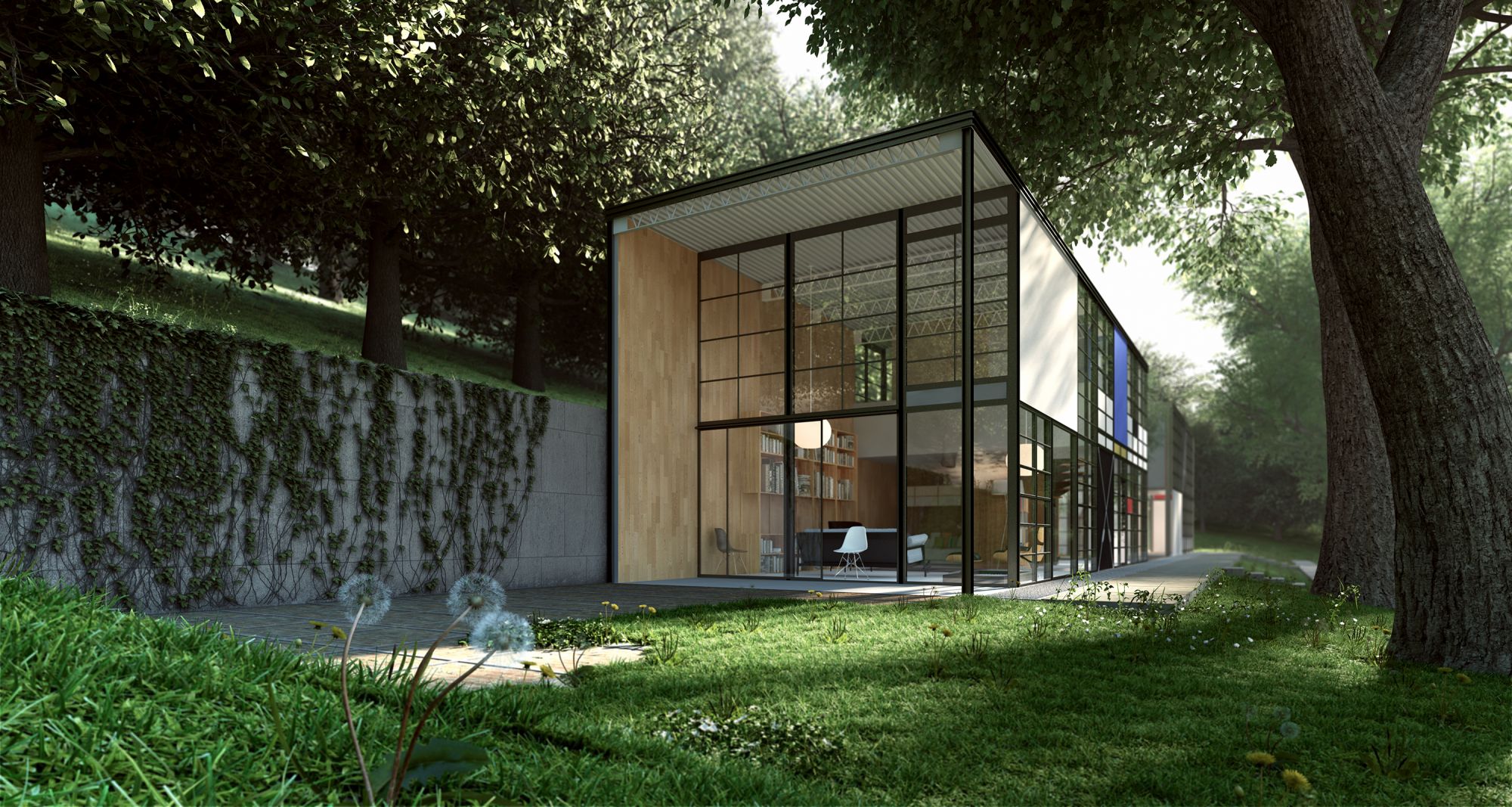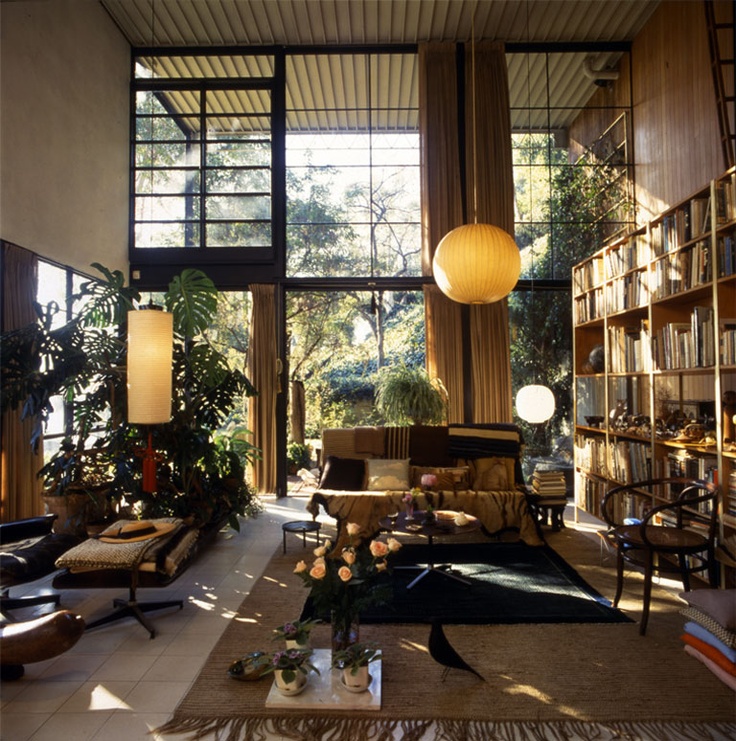Table Of Content

The mezzanine was originally used only for storage, but also served occasionally as the guest quarters. The underside of the ribbed ceiling of the Ferrobord roof decking was painted white, which makes the colorful primary painted exposed web joists stand out against it and makes it a design feature in its own right. The interior of the house is a completely free-flowing space with no evident divisions between spaces, even private and public areas are blurred. For example, the bedroom on the top floor overlooks the public living area on the bottom floor, with only a short terrace that joins the two rooms.
Case study conservation on the Eames' Case Study House - Los Angeles Times
Case study conservation on the Eames' Case Study House.
Posted: Sat, 18 May 2013 07:00:00 GMT [source]
Jens Risom: Master Furniture Maker
Charles's daughter, Lucia Eames, inherited the home and created the non-profit organization, the Eames Foundation, in 2004. Still a historic house museum maintained by the Eames Foundation, it was designated a National Historic Landmark in 2006[2] and serves as a pilgrimage site for nearly 20,000 visitors a year (reservations are required). The Eames House embraced new materials, technology, and a bright palette of primary colors on the exterior. More significantly, the original plans included spaces typical of most nineteenth- and early-twentieth-century houses, while the built plan does not. The Eameses omitted the fireplace from the final version of the house, a gesture towards technological advances in heating systems like radiant floor heating.
This Is Only An Exterior Tour
Solely making use of the off-the-shelf parts that were ordered, along with one extra steel beam, a two double-story structure with two parts was erected and designed into the landscape, instead of just enforcing the building on top of it. A concrete retaining wall that is 8 feet tall and 200 feet long acts as a support for the steel frame. The steel frame of the house consists of two rows of four-inch I-beams that were placed 20 feet apart.
How Much Does It Cost to Visit the Eames House?
The Eameses moved in Christmas of that year, and remained in the house until their death. Their 2-part home was originally going to sit across the meadow like a bridge, but after the couple came to love the space, they realized they wanted their home to be more integrated with the landscape, instead of dominating it. I feel so lucky I could get reservations for this tour and participate in this experience. One of the craziest facts I learned on this trip is that Ray and Charles Eames purchased this site before they designed any of their iconic pieces or were famous. It’s hard to imagine a time when designers could afford to buy oceanfront property near Santa Monica so early in their careers. As soon as you check in and walk through the gate, you are hit by what a unique and inspirational place Charles and Ray Eames created.
The parts were ordered and the Bridge House design was published in the December 1945 issue of the magazine, but due to a war-driven shortage, the steel did not arrive until late 1948. The Eames House doesn’t just make a statement from the outside; the interiors are equally compelling. The house is a melting pot of the Eameses’ diverse interests and design sensibilities—featuring Isamu Noguchi lamps, Thonet chairs, Native American baskets, and more. The living spaces are meticulously designed to serve multiple functions—a living room that transforms into a workspace, alcoves that turn into intimate conversation spots, and hallways lined with functional storage closets. It was constructed in 1949 by husband-and-wife design pioneers Charles and Ray Eames, to serve as their home and studio. The house is a living laboratory of the Eameses’ ideas and creativity, illuminating their approaches to life and work in a multi-layered, visceral manner.
Between the steel frames are a variety of transparent and solid-colored panels that are made from glass, fiberglass-like “pylon”, asbestos, plywood, and plaster. These panels were arranged specifically according to the changing sunlight inside the house throughout the day. Charles strongly believed in the architectural design principles of Frank Lloyd Wright, which unfortunately resulted in him being expelled from Washington University’s architecture program. In terms of his architecture career, he designed three houses in St. Louis as well as two churches in Arkansas without an architecture license. The iconic Eames House, or Case Study House #8, is a must see for any fan of modern architecture.
Art Periods – A Detailed Look at the Art History Timeline

Charles and Ray met in 1940 at the Cranbrook Academy of Art, where Charles was first a scholar of an industrial design fellowship, but later became an instructor. Ray enrolled in multiple courses at the academy in order to expand upon her preceding education in abstract painting. The objective of the house was for it to be built entirely from prefabricated materials that would not in any way disturb the site and surrounding nature while demonstrating a modern style that is economical and easy to build. The Eames weren’t the only ones to realize that the house of the architect had to be a theatre for architecture.

What the film with its charms leaves strangely obscure is the pure structure of the Eames’ house itself. Help us share the Eameses’ joy and rigor with future visitors, so they mayhave a direct experience of Charles and Ray’s approach to life and work. No refunds or date exchanges will be issued, except when the site is closed in response to elevated fire or Covid-19 concerns. For the safety of the staff and others, please cancel your visit if you are sick or have been in contact with any person who has or may have contracted Covid-19 in the last 2 weeks, prior to the tour. Young men, especially those with higher incomes, have a good amount of purchasing power. As many of them are getting married later or foregoing buying houses, they've also got cash to spend.
Guided Exterior Tour
The design used pre-fabricated materials ordered from industrial and commercial catalogs. Materials were ordered for the Bridge House and the design was published in the December 1945 issue of the magazine, but due to a war-driven shortage, the steel did not arrive until late 1948. By then, according to Ray, she and Charles had “fallen in love with the meadow.” The nature of the site, and the Eameses themselves, yearned for a different solution.
Ice Cube Explains Why the Eames House, and L.A. as a Whole, Are So Damn Awesome - We Like L.A.
Ice Cube Explains Why the Eames House, and L.A. as a Whole, Are So Damn Awesome.
Posted: Wed, 15 Oct 2014 07:00:00 GMT [source]
In 2004, Charles's daughter, Lucia Eames, created a not-for-profit organization called the Eames Foundation to preserve and protect the Eames House and to provide educational experiences that celebrate the creative legacy of Charles and Ray Eames.
It was designed and constructed in 1949 by husband-and-wife Charles and Ray Eames to serve as their home and studio. Two distinct boxes make up the residence—one serves as the living quarters and the other as a studio. The house and studio are separated by a concrete retaining wall that integrates seamlessly with the existing landscape.
The lines were blurred between their living and working life, and as such their guests were usually the happy guinea pigs of their new inventions. Originally, the house was baptized the “Bridge House” and designs were published by Charles Eames and fellow architect Eero Saarinen. In 2004, Charles’s daughter, Lucia Eames, created a non-profit organization called the Eames Foundation to preserve and protect the Eames House and provide educational experiences that celebrate the creative legacy of Charles and Ray. The Eames Foundation was founded in 2004 to preserve and protect the Eames House as it faced several conservation challenges. In 2012, after consulting with a number of experts, the Foundation partnered with the Conservation Institute to create a long-term conservation strategy.

No comments:
Post a Comment